Diving with Cozumel's Most Fascinating Underwater Creatures
Cozumel is an easily accessible and popular North American dive destination. With numerous accommodation options (including a couple of dive lodges that feature shore diving opportunities), great restaurants, a flotilla of dive operators to choose from, gorgeous underwater topography, and an impressive cast of underwater critters, Cozumel really does have something for everyone.
Cozumel has a lot going for it besides the beautiful reef structure that is highlighted by some very steep walls and innumerable swim-throughs. It is also downright fishy, due in no small part to the establishment of a no-touch, no-take Marine Park in 1996, which incorporates many of the best sites on the island.
In my experience of more than 10 trips to Cozumel, I’ve found that some sites are fishier than others. The Palancar system to the south, comprised of Caves, Bricks, Gardens and Horseshoe, is very beautiful from a topographical viewpoint, but it is not the fishiest of locations on Cozumel. Still, every time I have dived in this area, I’ve seen at least a couple of turtles, a nurse shark or two, and many pairs of angelfish, as well as other assorted reef fish. Further north, one my favorites – Paso del Cedral – has resident schools of varieties of grunts, as well as aggregations of porkfish. Again, I’ve never dived this site without seeing at least one turtle and shark. La Francesa, a very pretty site, is another place where large schools of grunts congregate.
On every dive, various species of angelfish, filefish, triggerfish, squirrelfish and many others are evident. Large groupers and morays are not uncommon, and eagle rays can be seen from December to February, often in squadrons. Turtles are everywhere, chewing on sponges and jellyfish, sleeping in nooks, or scooting up to the surface to catch a breath every now and then as they make their leisurely flights over the reefs. The turtles seem quite habituated to divers, and can, at times, be closely approached.
Nurse sharks are often found sleeping under ledges and in the dark recesses of swim-throughs. Reef sharks, hammerheads, dolphins and manta rays are less common, but they have been spotted on the reefs of Cozumel. Near the end of one memorable dive a few years ago, our group encountered a pod of large Atlantic spotted dolphins that were rummaging along the edge of the reef, noses in the sand, foraging for snacks. Being able to spend at least 20 minutes watching these big, beautiful mammals engaged in their natural behavior was incredible – but, as luck would have it, I had left the camera on the boat and have no images to document it.
Despite the abundance of beautiful scenery and subjects, underwater photography in Cozumel presents a few challenges. There is often current on the reefs, usually running south to north, and it can be everything from a mellow drift to Mr. Toad’s Wild Ride. There are ways to cope in current when trying to shoot images, with the best being to find a place to tuck oneself in the lee of a bit of reef to get out of the breeze. Touching the reef in the Marine Park is prohibited, so grabbing a sponge or a bit of a coral to stay stationary is a big no-no.
The requirement that Cozumel divers dive in groups and surface with a divemaster can also make photography challenging, as the divemaster will most likely keep moving down current, touring the reef with the group, unless the majority are photographers who want to poke along at a slower pace, and have arranged that in advance. I’ve found shooting wide-angles to be generally easier, less stressful and more rewarding in Cozumel, both because they can be taken from blue water, typically taking less time to frame up and capture than macro or fish portraits — so no need to worry about whacking the reef — and because the visibility and the scenery on Cozumel are usually so good that the big picture calls to me.
On pokey sites like Paso del Cedral, the whole dive can be spent on one area about the size of a couple of tennis courts. This is a great location to look for jawfish, the endemic splendid toadfish (hint: they are always in a hole in the reef, usually down low to the sand), octopus and many of the common reef fish. The formations and shape of this site make it quite easy to find a spot to tuck in, out of the current.
There is a tendency when the sites are so pretty and fishy to miss the tiny macro stuff that lives on reefs and in the sand, but it is worth really slowing down and having a closer look. Cozumel doesn’t seem to have a lot of nudibranchs, and the ones they do have are pretty teensy, so they are exciting to spot. Jawfish, sometimes with eggs in mouth, various shrimps (hint: look in cleaning stations and on anemones), arrow crabs, blennies, juvenile fish, including the ever-frustrating-to-shoot spotted drum fish, dice-like trunkfish and gorgeous neon-blue spotted damselfish, are often seen.
Personally, I will never tire of the diving in Cozumel. It is the whole enchilada from a photography point of view – with great wide-angle, fish portrait and macro opportunities. Its ease of access, great restaurants and many accommodation options are very attractive, and for a Caribbean destination, it is quite budget-friendly.
In the immortal words of Arnold Schwarzenegger, “I’ll be back.”
Judy is an avid underwater photographer and traveler whose work has appeared in several dive publications. Judy also shares a comprehensive dive travel and photo blog.
Cozumel is an easily accessible and popular North American dive destination. With numerous accommodation options (including a couple of dive lodges that feature shore diving opportunities), great restaurants, a flotilla of dive operators to choose from, gorgeous underwater topography, and an impressive cast of underwater critters, Cozumel really does have something for everyone.
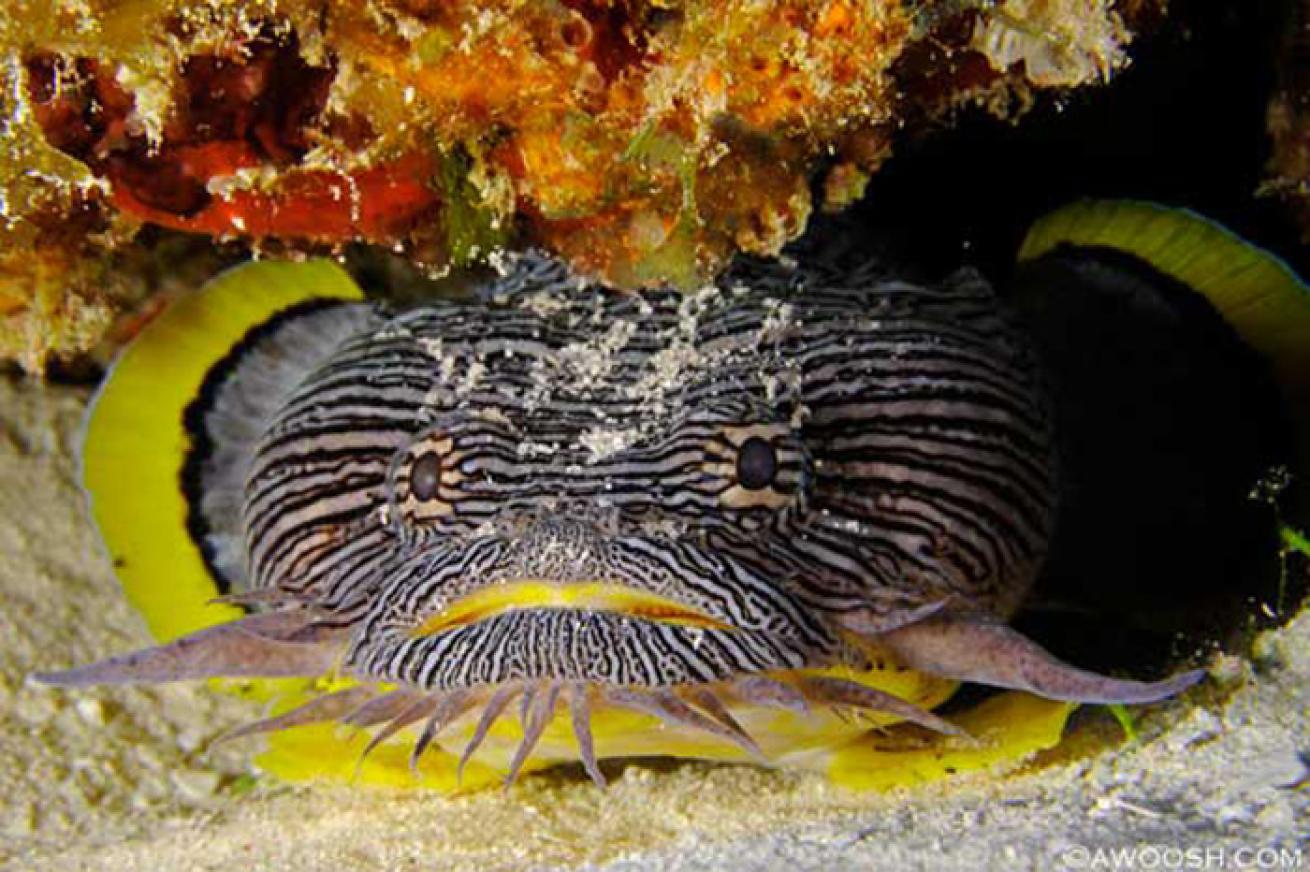
Judy GToadfish in cozumel
This little beauty is endemic to Cozumel, meaning that Cozumel is the only place in the world where it has been documented. They grow from four to six inches in length and inhabit little holes in the reef, most usually near where the reef meets the sand. At night, they can often be heard “singing” — more like croaking, hence the name toadfish — in their efforts to attract a mate.
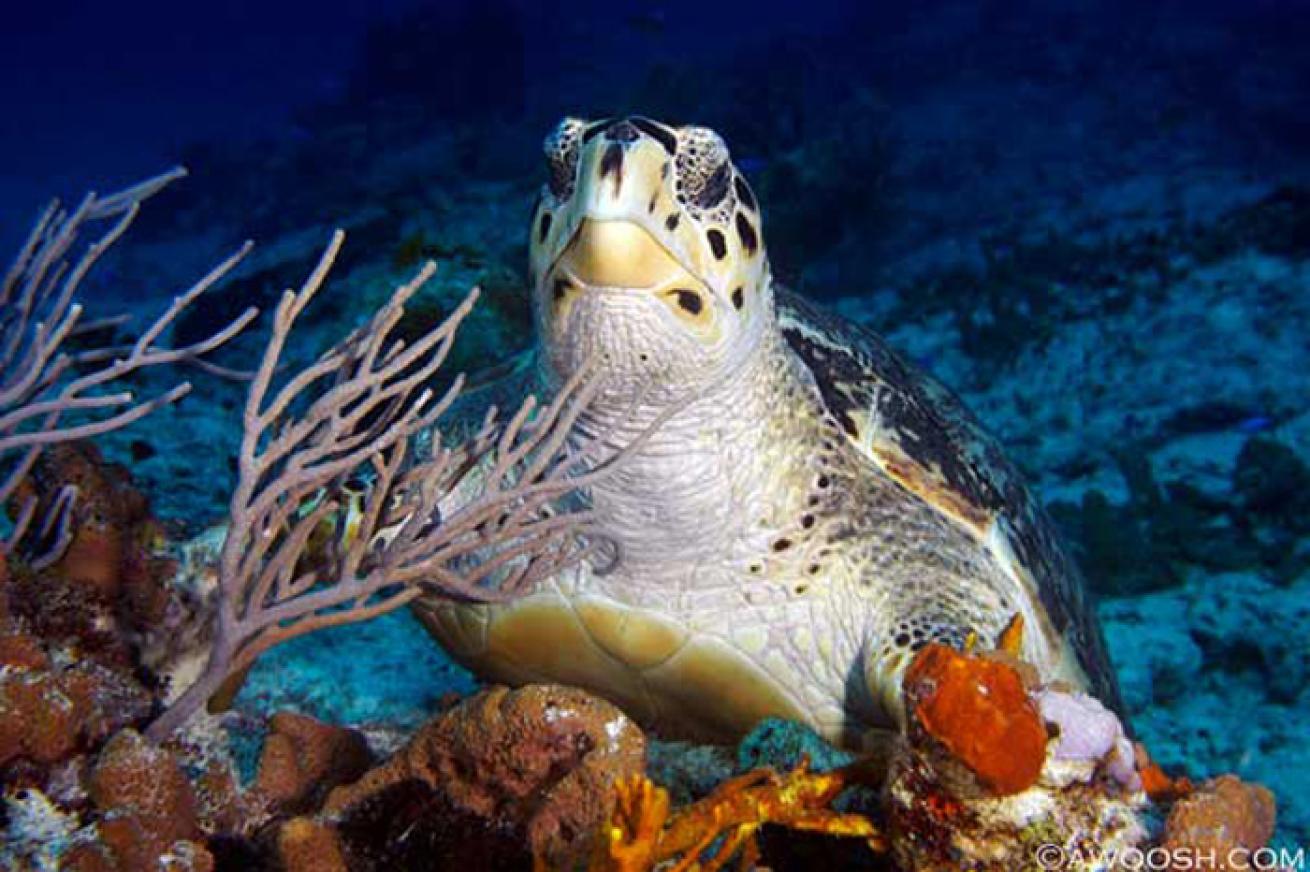
Judy GTurtle in cozumel
This turtle was chowing on a sponge as I drifted near to it in a fairly stiff current. It looked up for a moment to check out the bubble blower, and then went right back at it. I was finning hard, into the current, to hold my place long enough to get this shot.
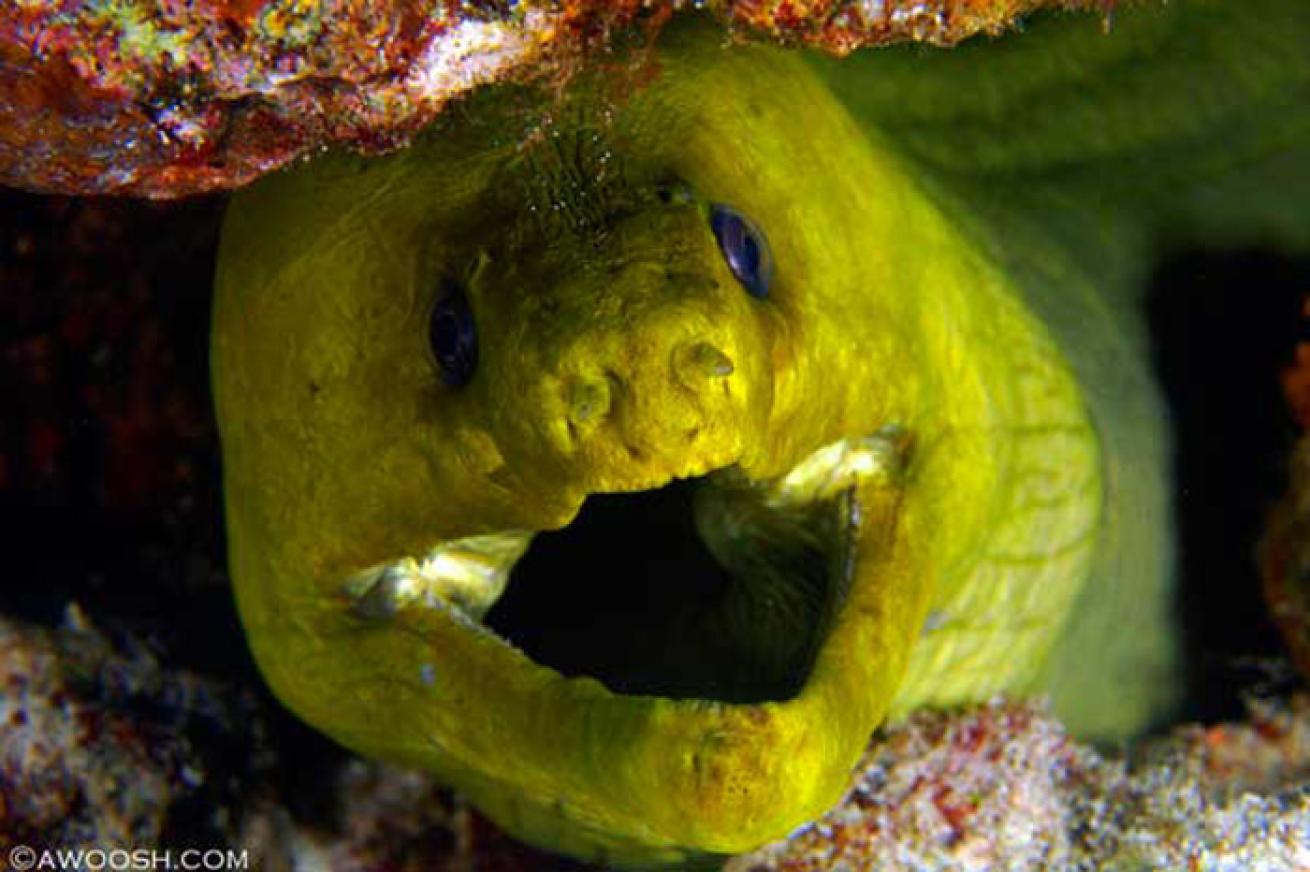
Judy GFive feet Eel in cozumel
This eel was freaking huge! At least five feet in length, with a very chunky girth, it was nestled in under a coral head on one of the Palancar sections of the reef. I suspect it is quite elderly, due to lack of teeth – to me, it looks like a grandpa who has lost his dentures. Green morays are reported to grow to be from 3 to 5 feet in length.
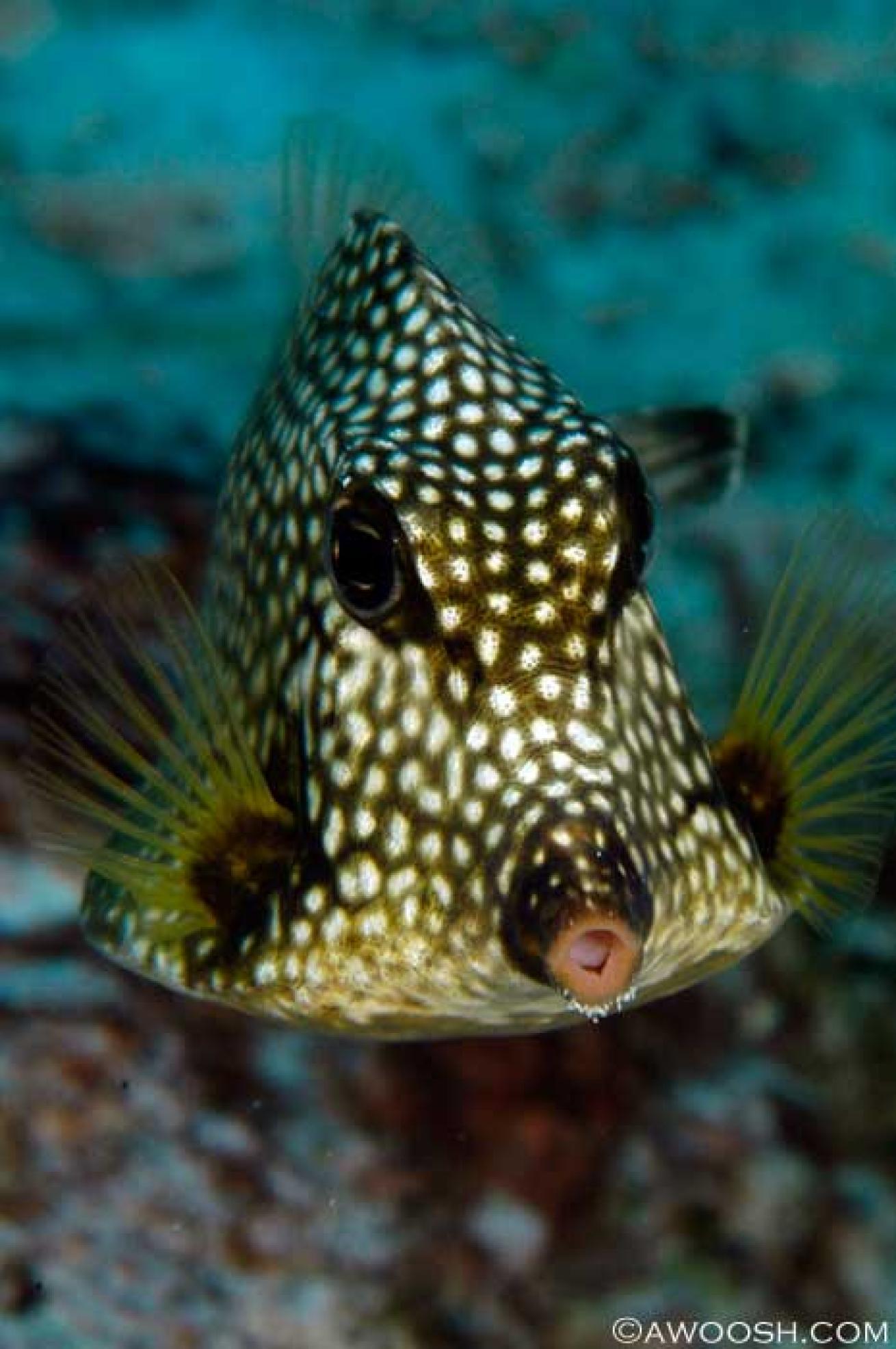
Judy GFish with kissy face in cozumel
I always feel the urge to call this fish a kissy face, due to its cute, pursed little mouth. These are industrious little fish that bumble along the reefs. They can be challenging to photograph, as they have a tendency to turn away from the camera, and they are in constant motion. They grow from 6 to 10 inches in length.
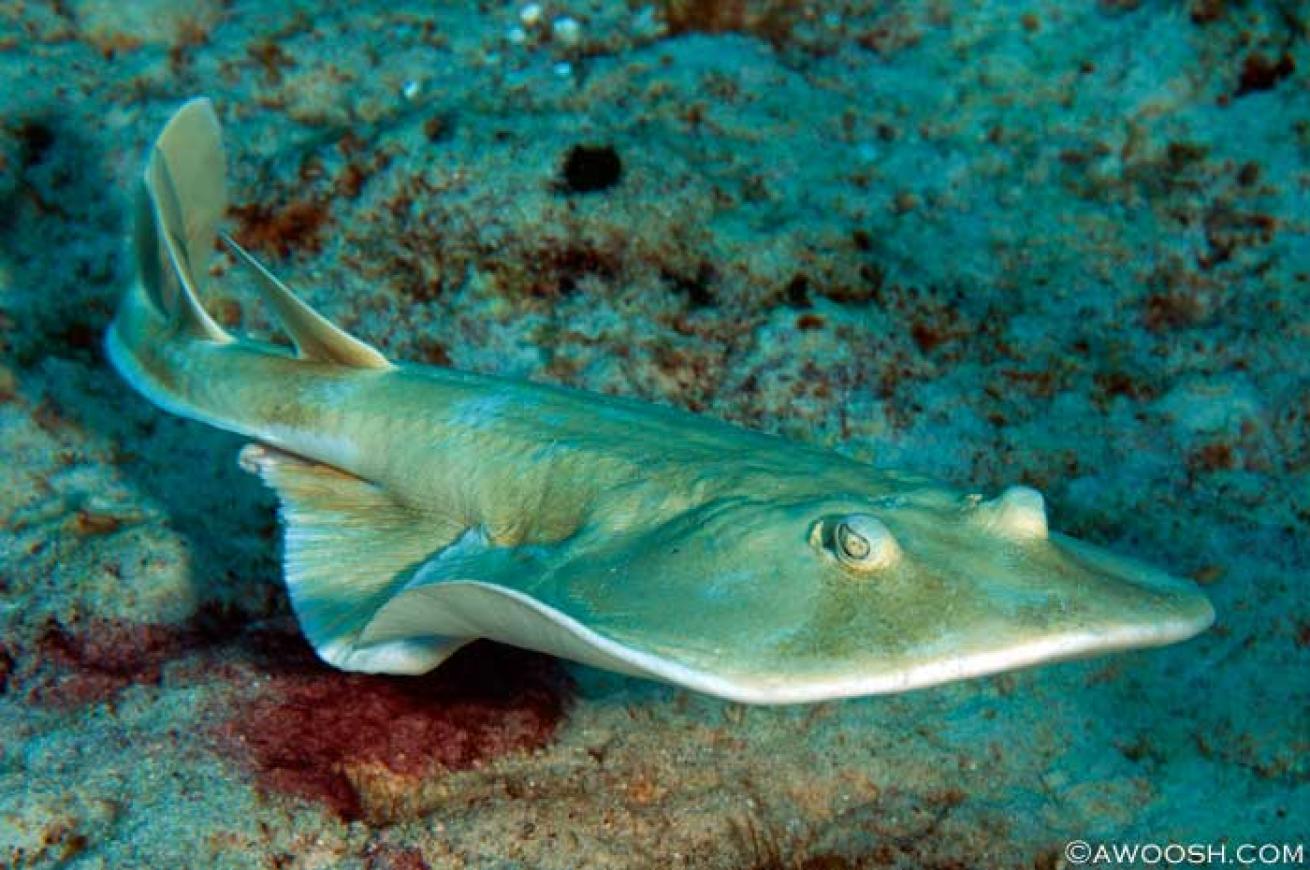
Judy GElectric ray in cozumel
I will admit it – when I spotted this ray, I had no idea what kind it was. Had I known it was an electric ray, I would have kept a bit more distance between it and me, as electric rays are capable of discharging a very painful jolt. They grow to a size 10 to 15 inches across head disc. This is the only time I’ve seen this variety of ray in Cozumel. Stingrays are very common in the sand flats, and eagle rays can be seen from November to February, when they congregate in Cozumel to breed.
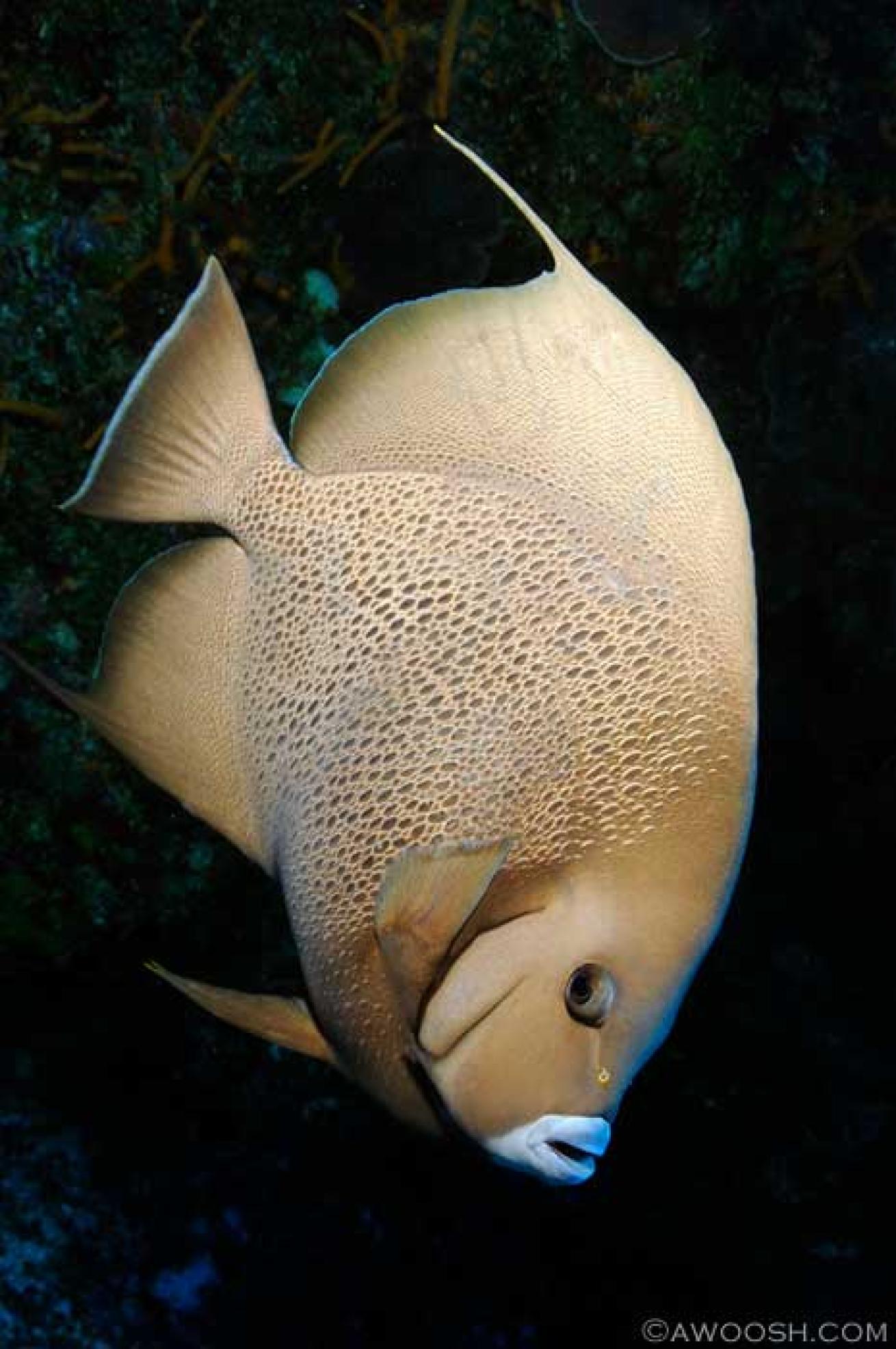
Judy GA beautiful fish in cozumel that grows from 10 to 18 inches
These beautiful fish are reported to grow from 10 to 18 inches in size. I could swear that I’ve seen larger ones than that on Cozumel. They are beautiful, fairly shy fish, so they’re not all that easy to photograph, and are often seen in mated pairs moseying along the reefs.
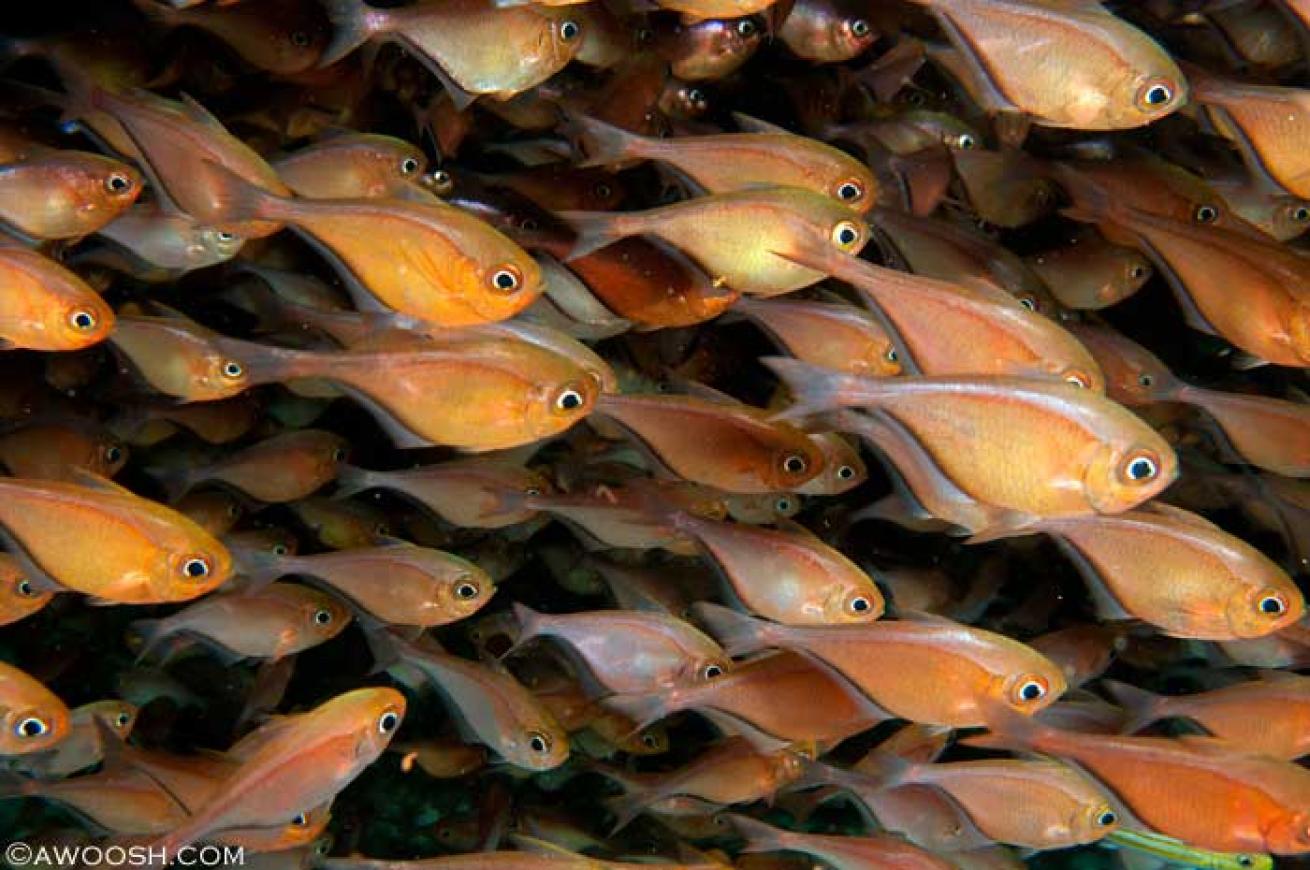
Judy GGolden fishes in cozumel
These little golden beauties are between 1 and 3 inches long. They favor dark recesses and can be seen in some of the swim-throughs at Palancar. They are most usually schooled in fairly hefty congregations.
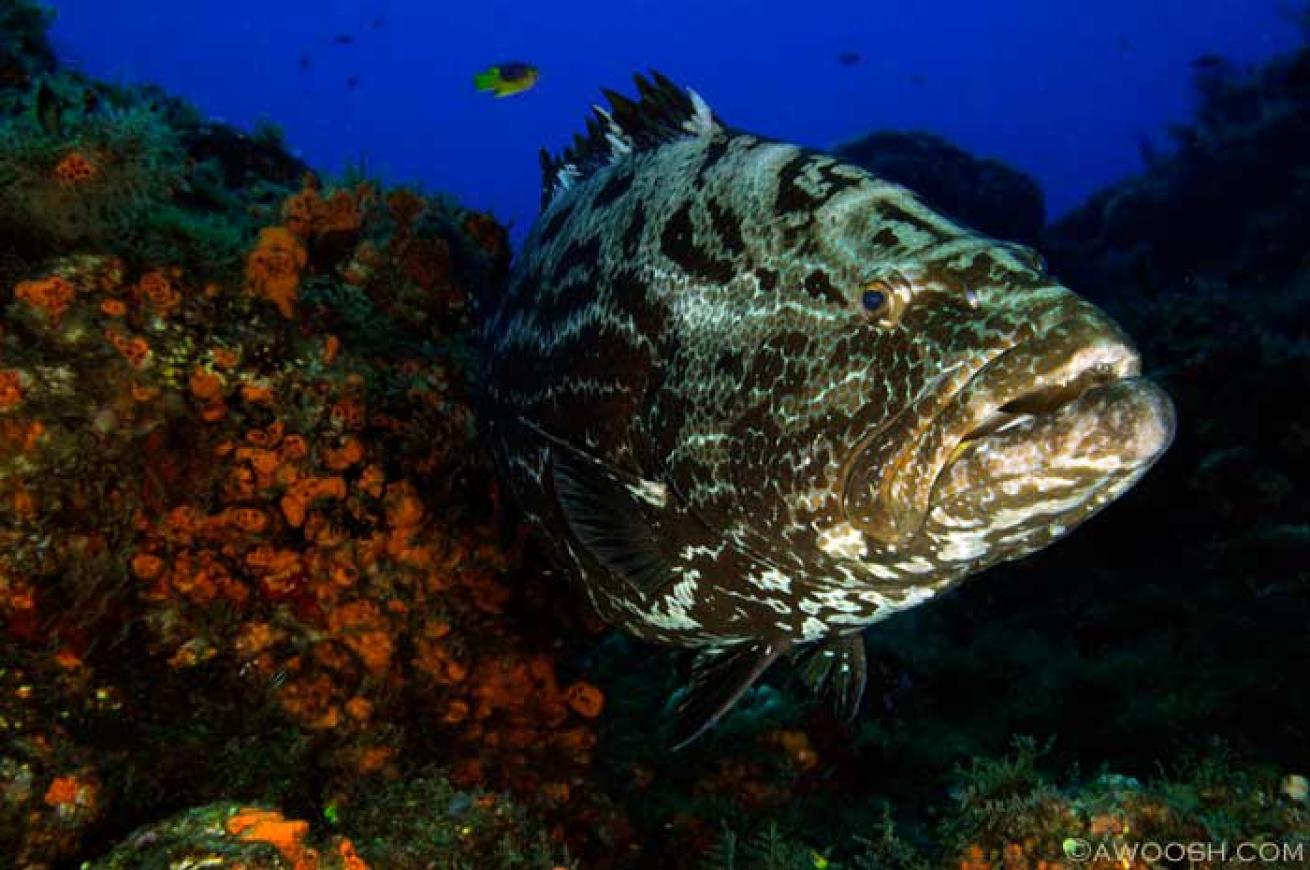
Judy GLargest variety of fish commonly seen in Cozumel
You can call me "Sir." This is the largest variety of fish commonly seen in Cozumel, growing to a maximum-recorded length of 4 feet. This big boy was every bit of that, and maybe then some. He and I surprised each other as I rounded a corner on a dive on La Francesa.
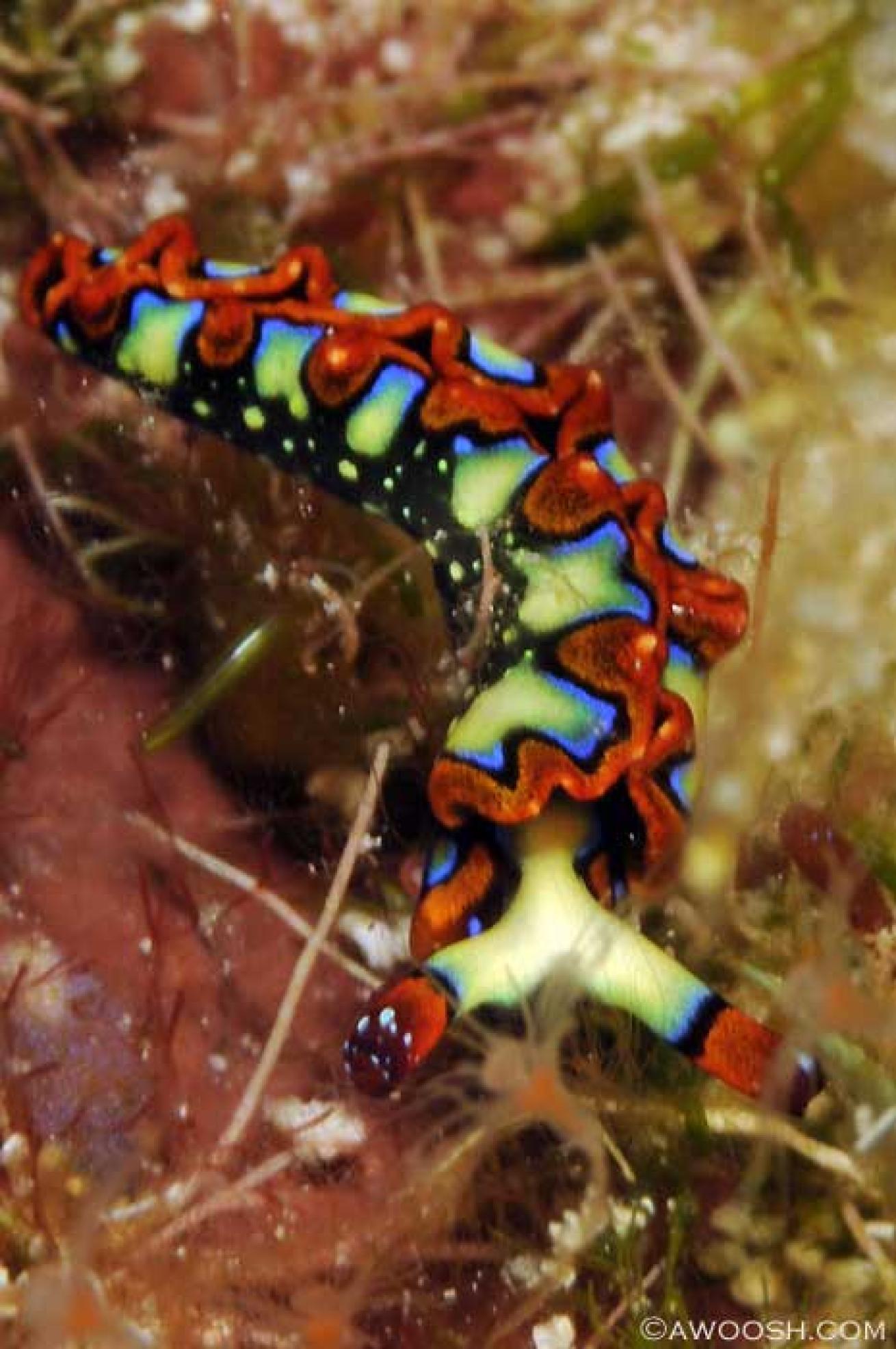
Judy GIn Cozumel
As I mention in my blog below, I haven’t seen a lot of nudibranchs/sea slugs in Cozumel. This little beauty was only about half an inch long, and I would never have spotted it without the help of Pedro, Blue XT-Sea’s legendary eagle-eyed guide. They grow to a maximum of 1 inch in length.
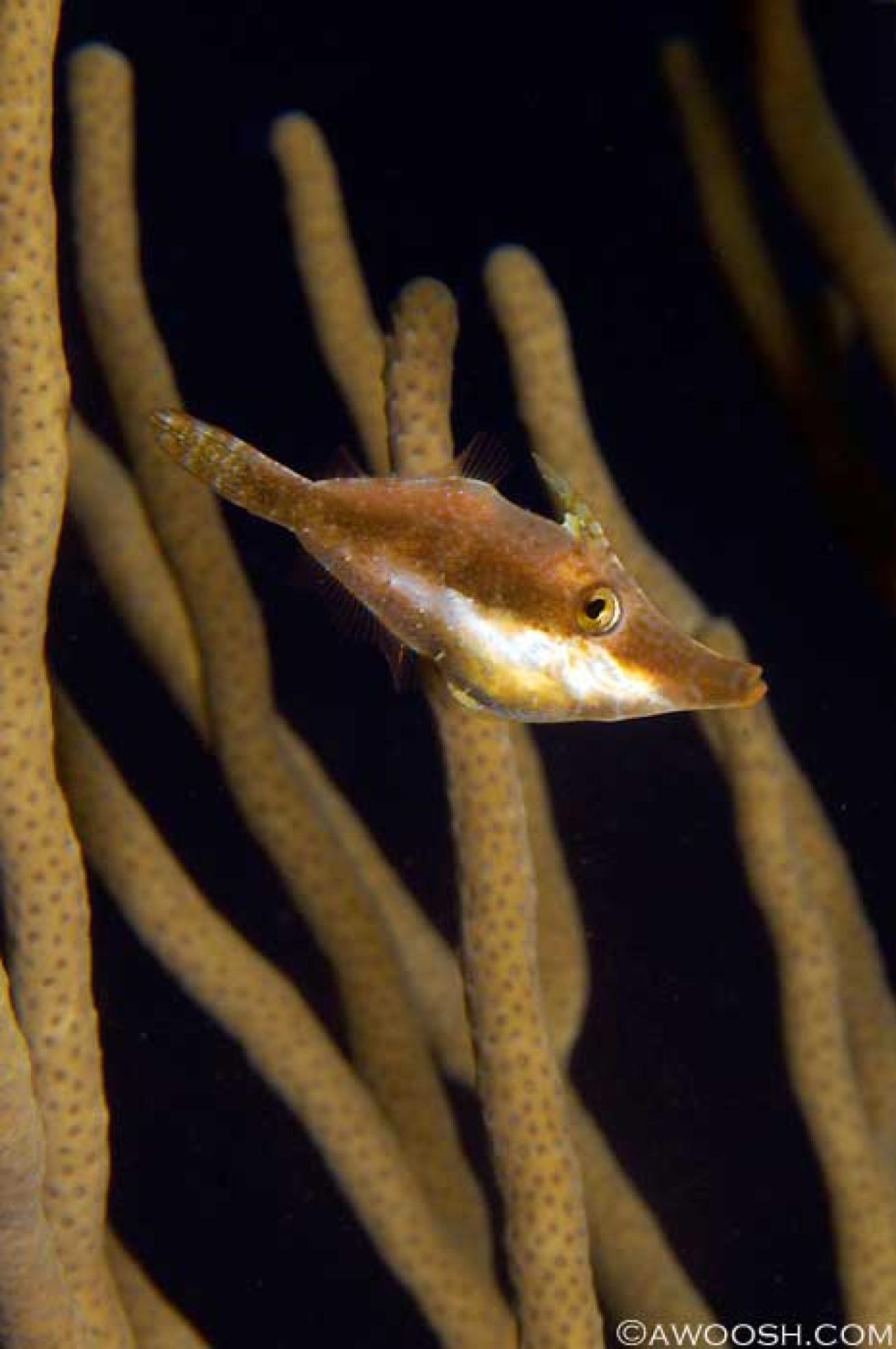
Judy GThese creatures can camouflage easily
These little cuties are most often seen hiding among the branches of gorgonians, and they are great at camouflage and tough to spot. They grow to about 2.5 inches in length. This one was smaller than that.
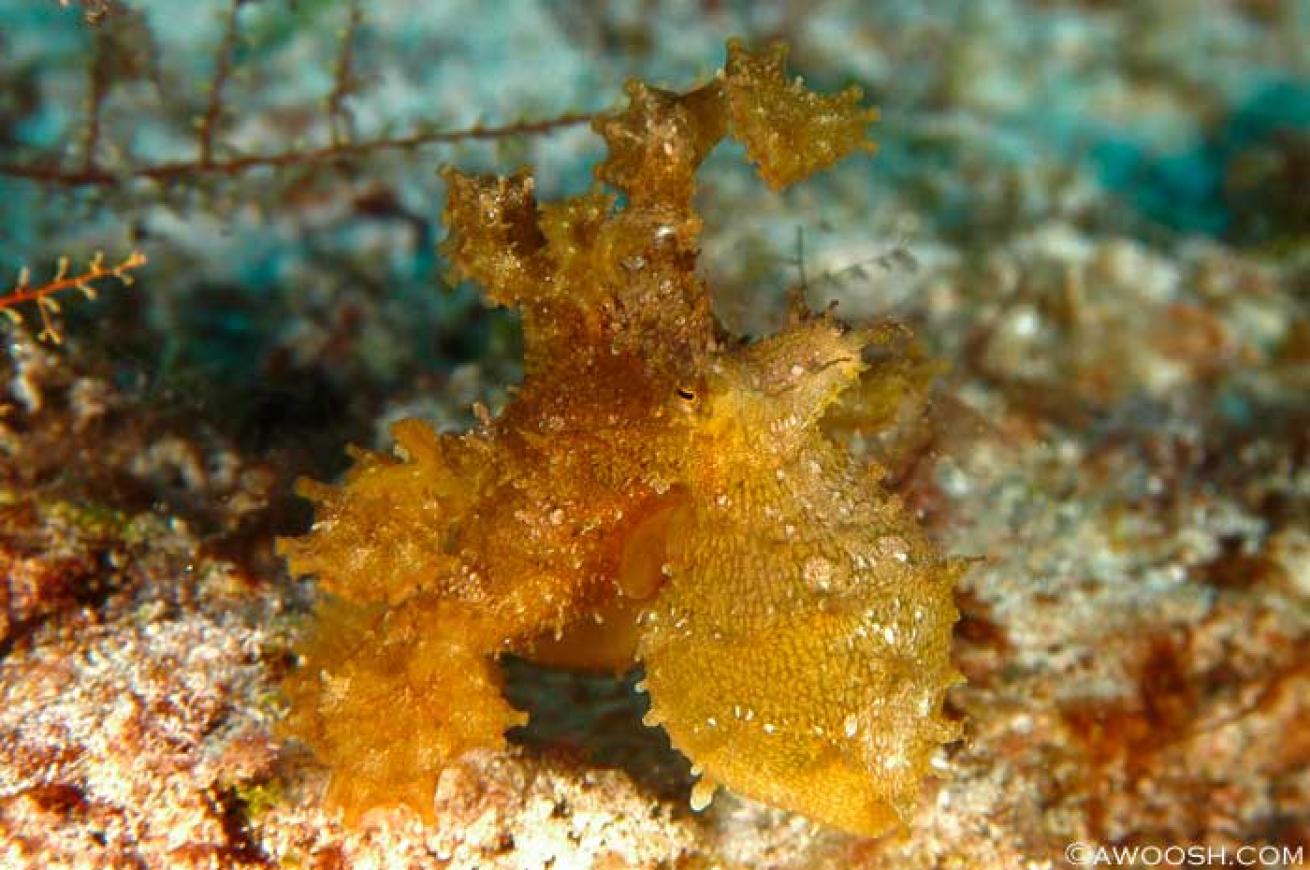
Judy GOctopus in cozumel
I have not been able to positively identify this little octopus. It looks a lot like an algae octopus, which can be seen in the tropical Pacific, but as far as I know, it is not documented in the Caribbean. It was very tiny, maybe 1.5 inches in length, and was trying very hard, and quite successfully, to look like some of the algae surrounding it.
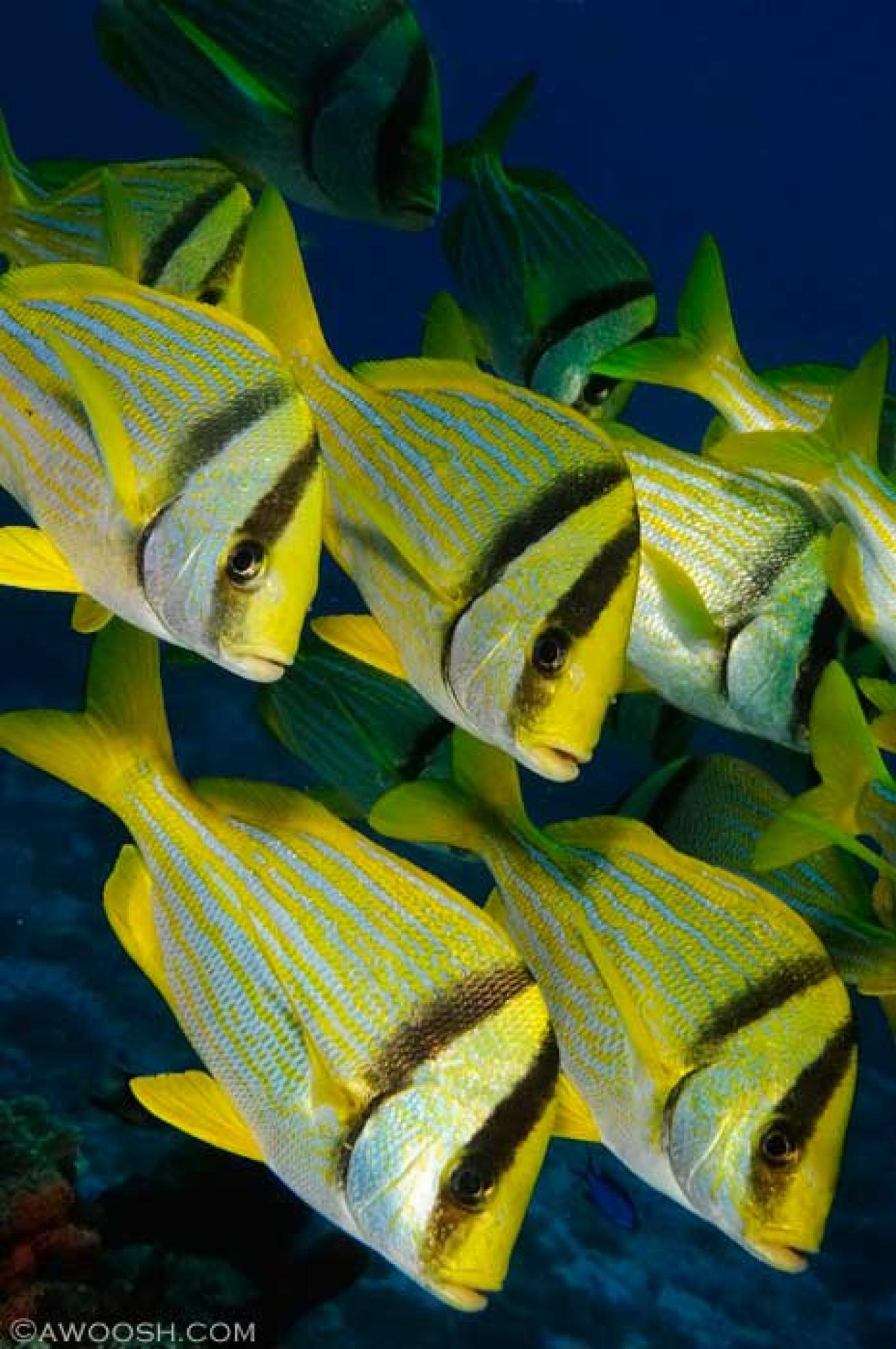
Judy GPorkfish in cozumel
Porkfish tend to gather in small schools and can be seen on several sites, including Paso del Cedral, where this shot was taken. They grow from 6 to 10 inches in length.
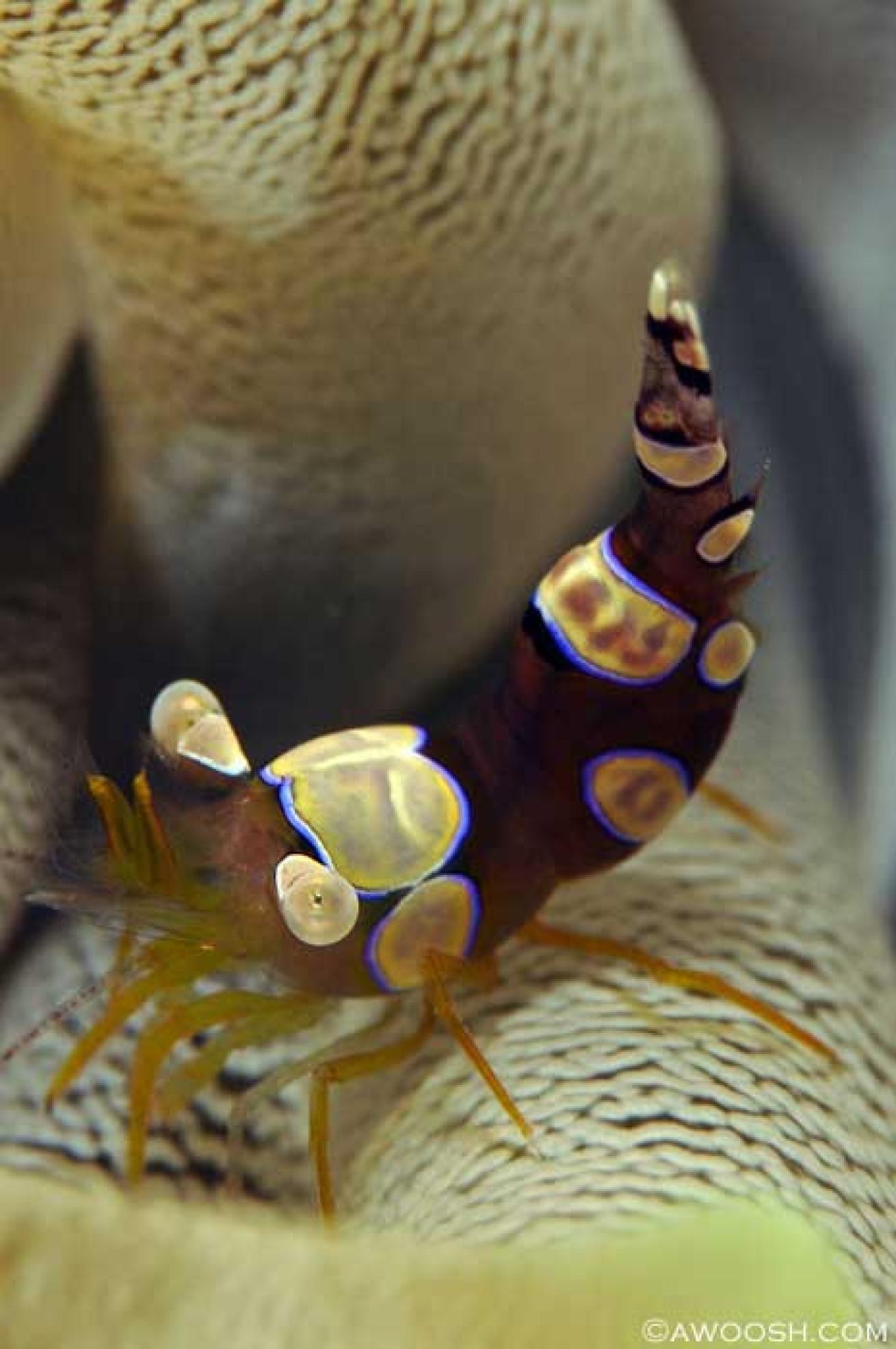
Judy GLittle shrimp in Cozumel
These are tiny little shrimp that can be found on anemones. They can be perplexing to photograph, as the tendrils of anemones tend to be constantly moving, especially when there is current.
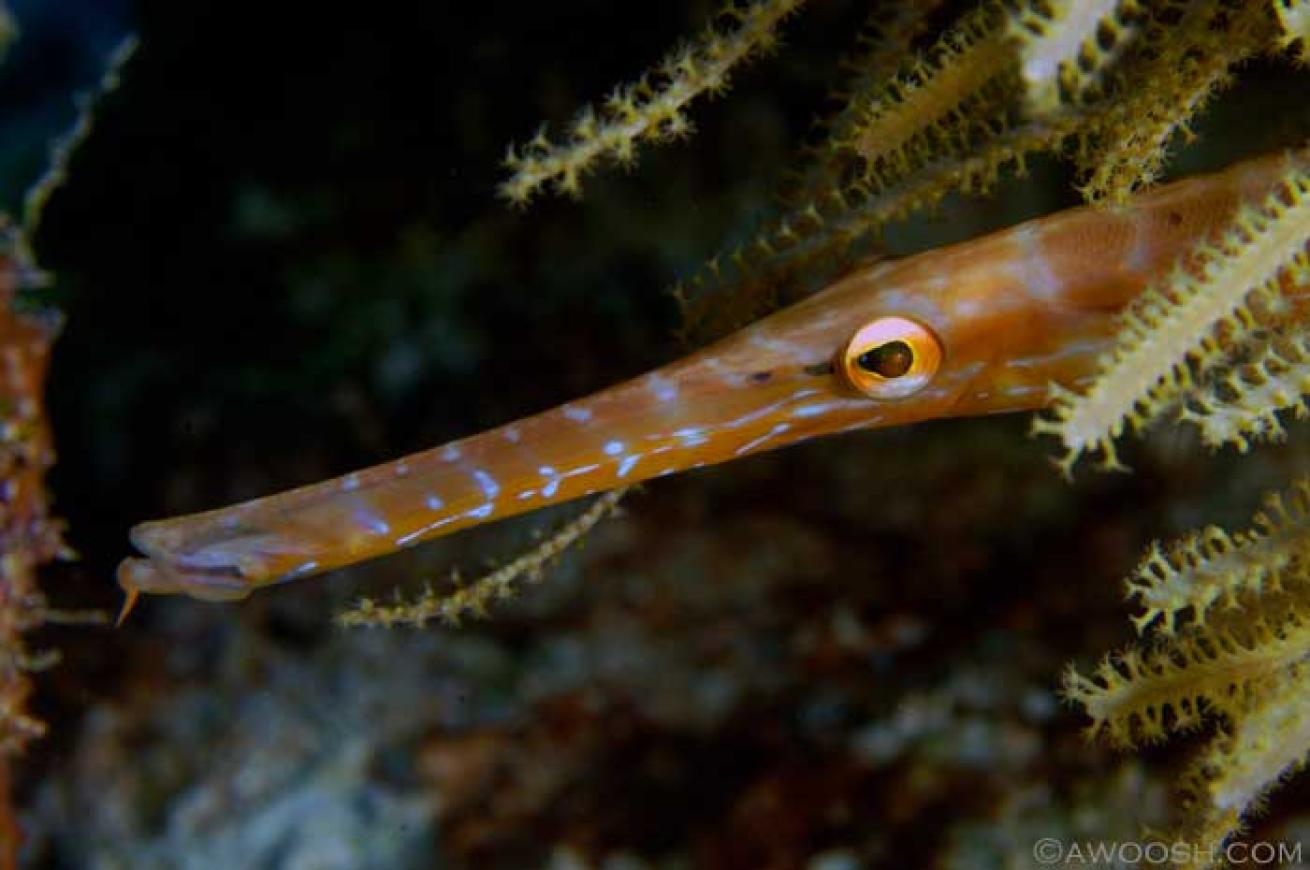
Judy GTrumpetfish in Cozumel
I haven’t seen a lot of trumpetfish since the 2006 hurricanes – before which they were quite common in Cozumel. Their preferred habitat seems to be sea rods and gorgonians, both of which were severely impacted by the hurricanes and will take some time to regenerate to their previous abundance, as, it would appear, will these fish. They can grow up to 2.5 feet in length, and like the filefish, are excellent at camouflage, with the ability to change colors to match their environment.
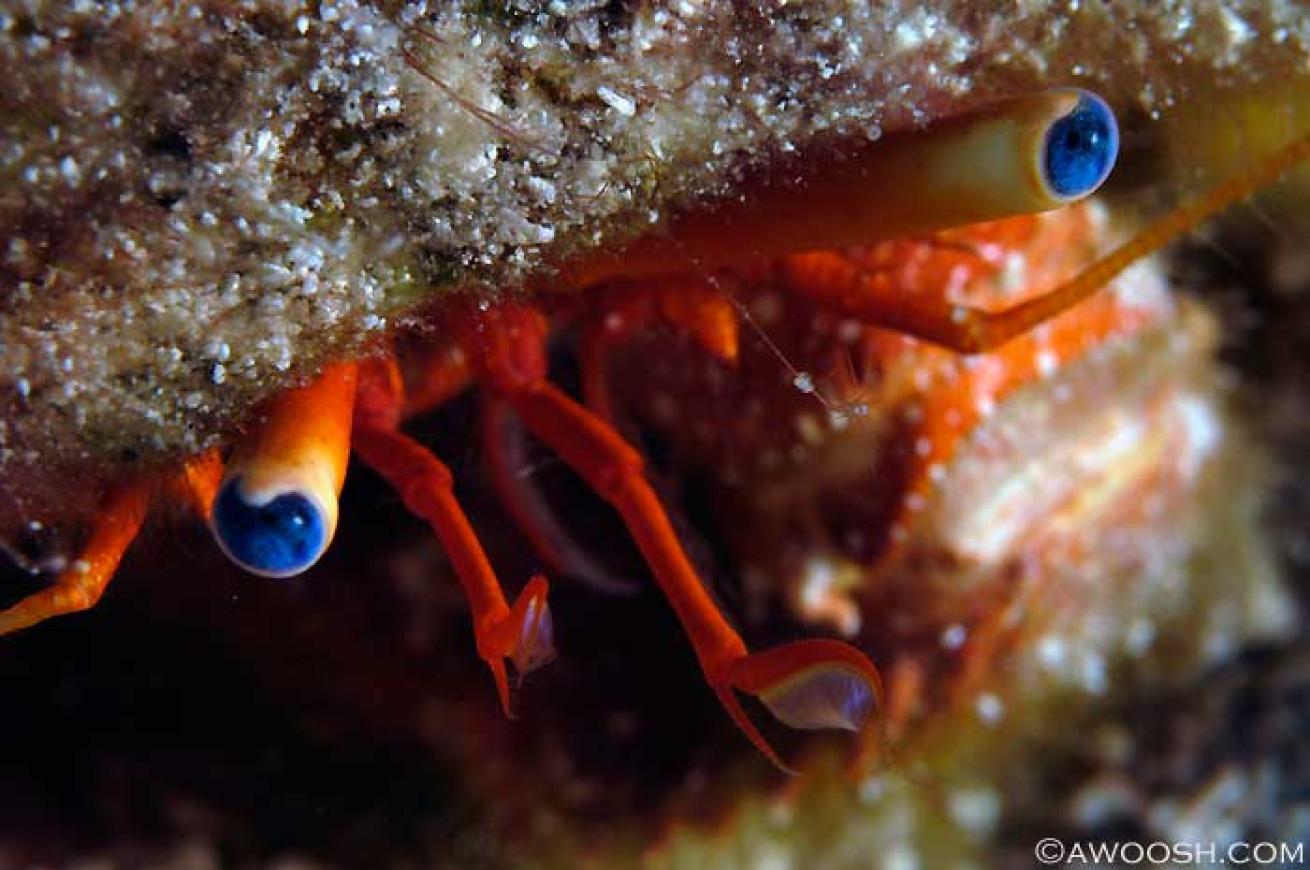
Judy GCrabs in Cozumel
There are lots of crabs to be seen on Cozumel, the largest being the hefty channel clinging crab. This little blue-eyed hermit crab was considerably smaller than that, at about 2 inches.
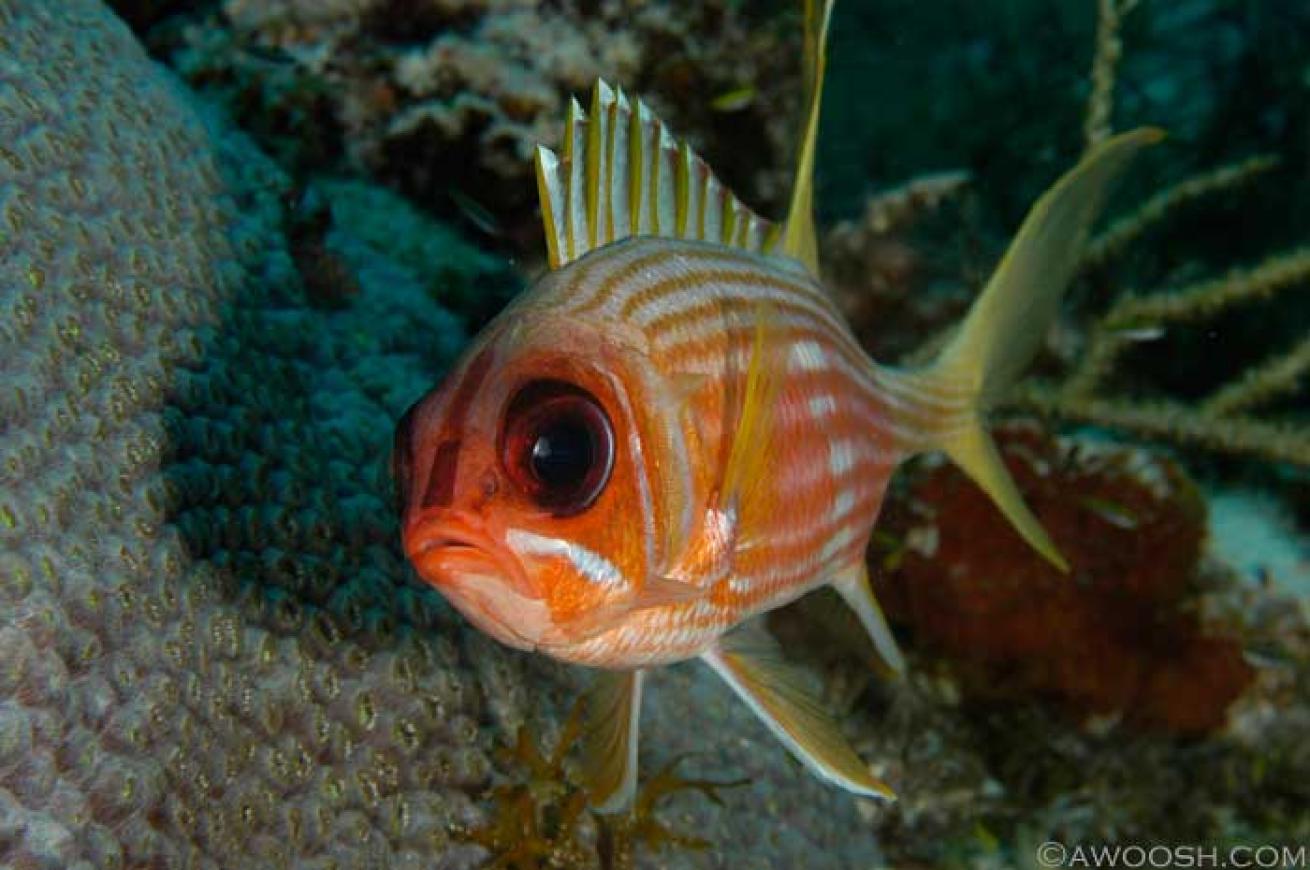
Judy GSquirrelfish in Cozumel
You’ll see lots of these squirrelfish on Cozumel, often lurking in dark spaces on the reef and during night dives. They can be from 6 to 12 inches in length.
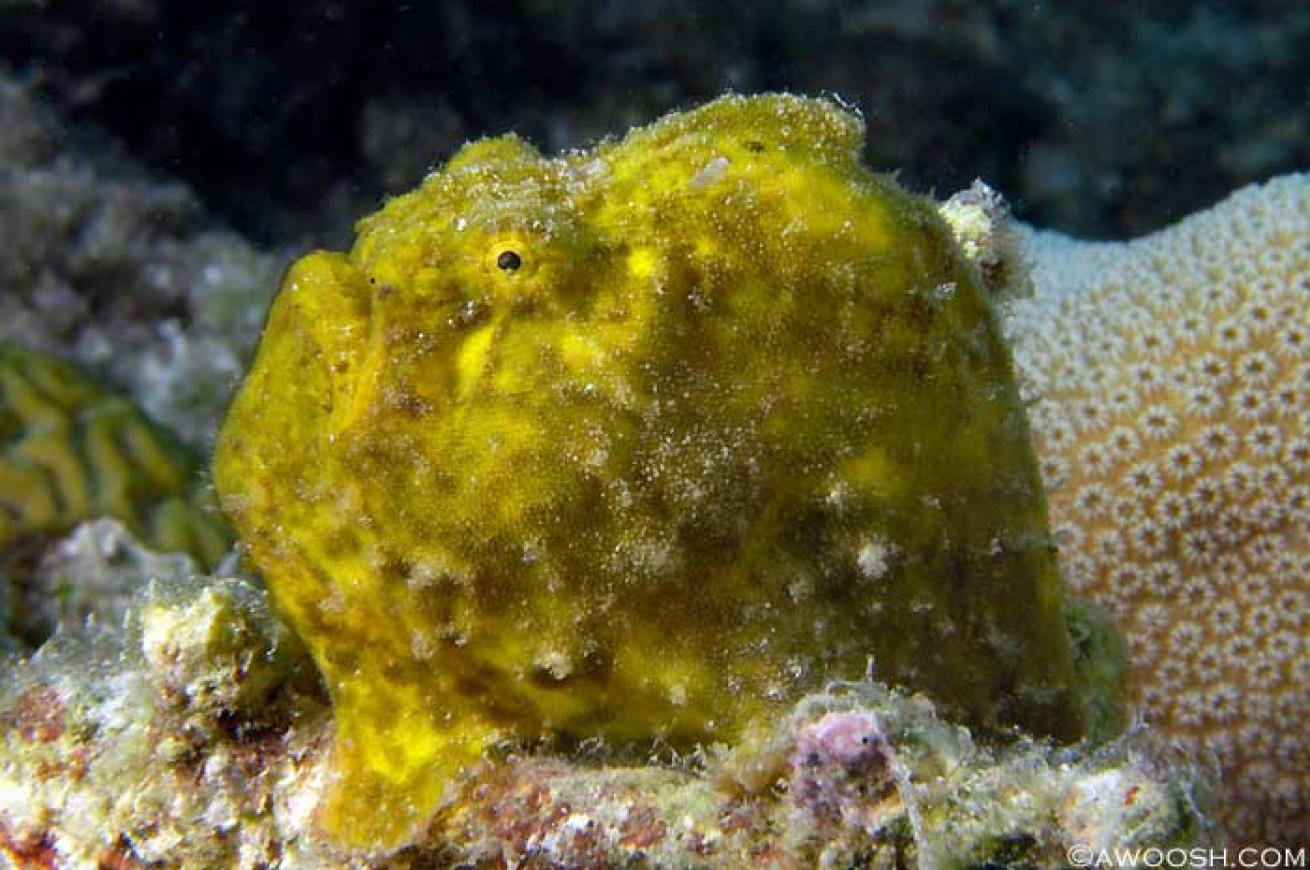
Judy GFrogfish in cozumel
I haven’t seen a lot of frogfish, also known as anglerfish, in Cozumel, most probably because they are excellent at blending in to their surroundings. Frogfish are ambush predators; they hunker down on the top of the reef, extend their “lure” out of the front of their head to entice nice little fishies to come in for a taste, and then wham! they pounce with a lightning-fast strike using a huge, yawning mouth to grab their prey.
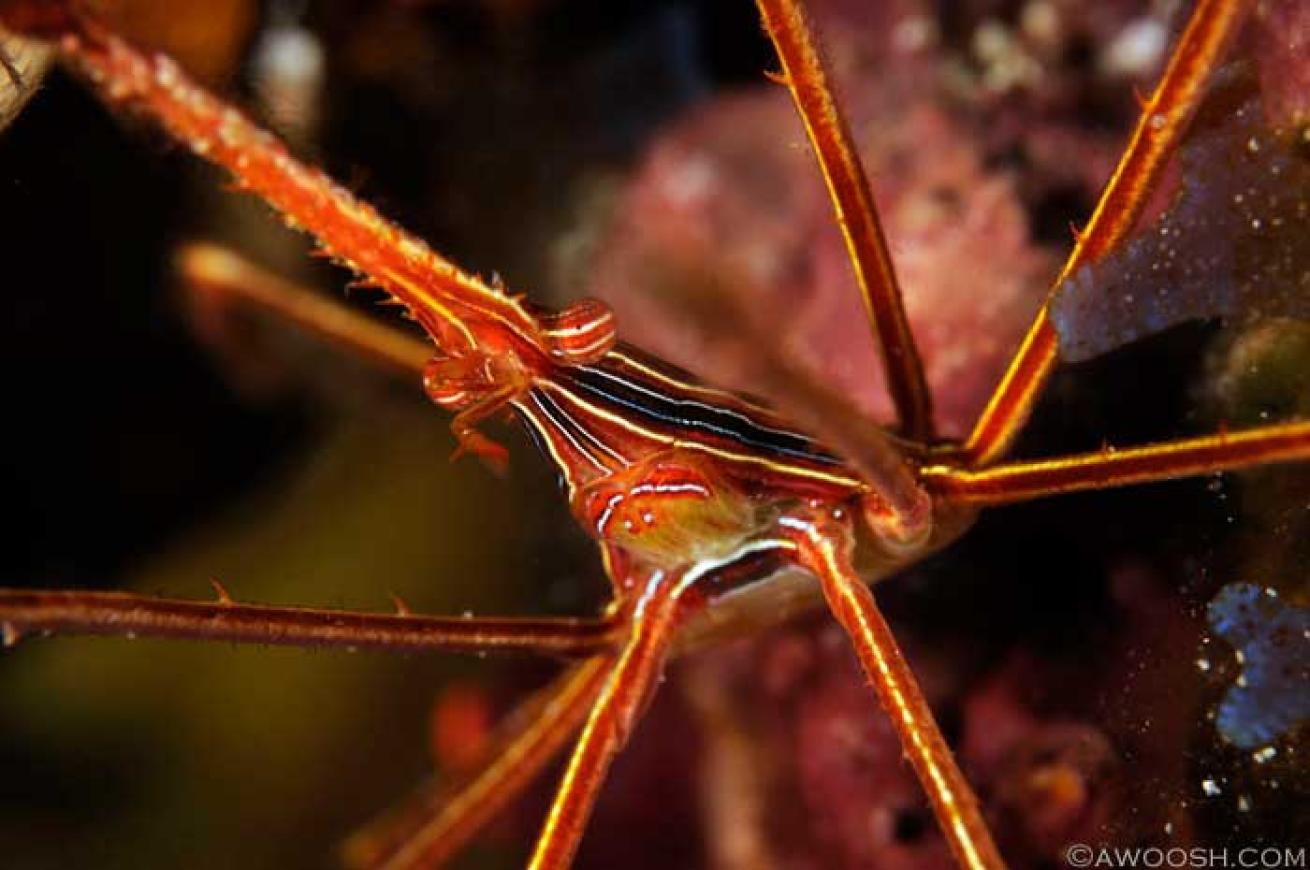
Judy GSponges or crevices in cozumel
Peeking into vase or barrel sponges, or looking into small crevices on the reef are good ways to spot one of these colorful crabs. They have tiny pincers on a pair of their front, spider-like legs that they use to move their food to their mouths. They grow to a maximum of 2.5 inches in length.
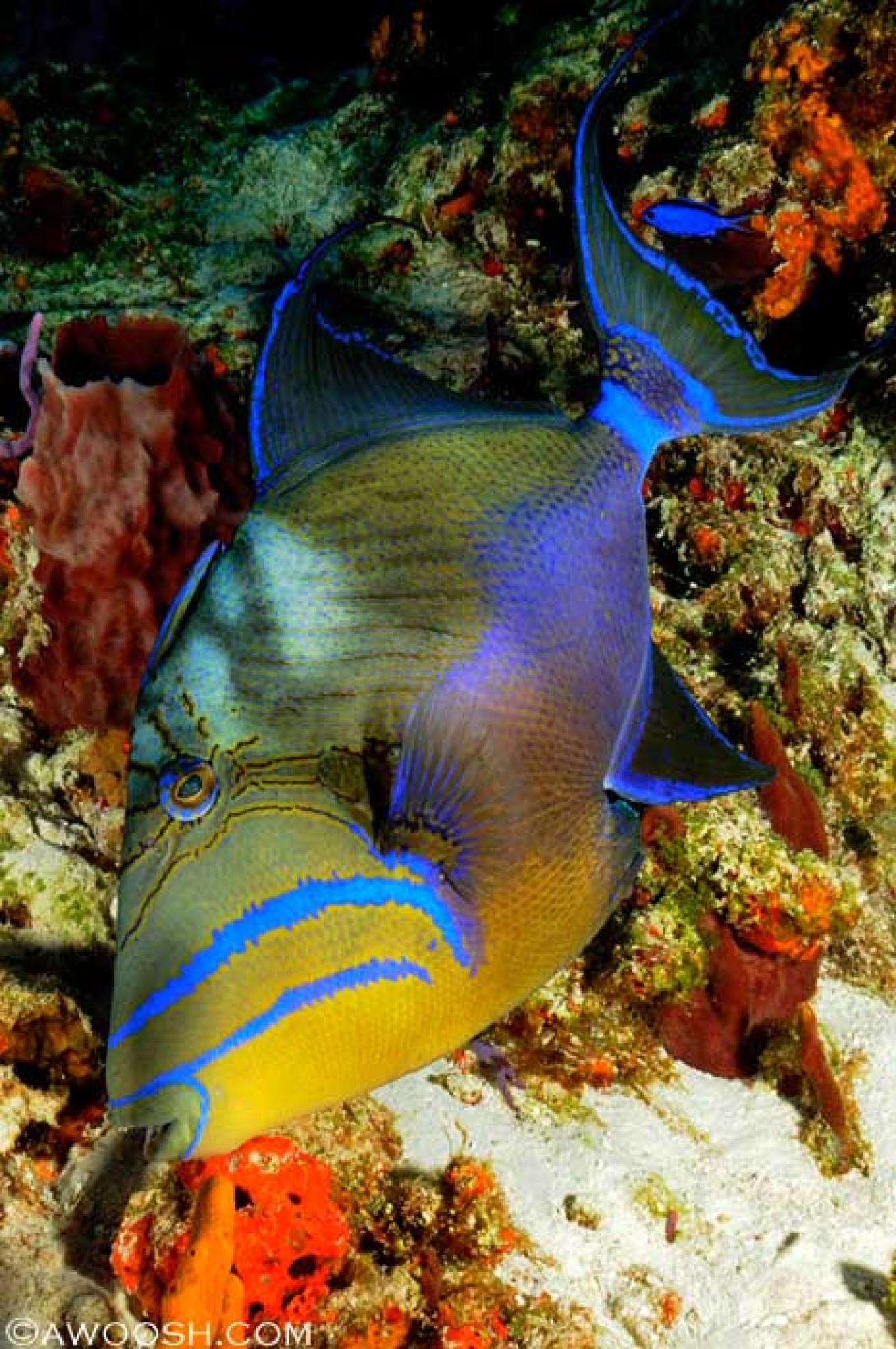
Judy GMost beautiful fish in the sea
I think this is one of the most beautiful fish in the sea. They are another fairly shy fish, so they can be challenging to approach closely enough to get a nice shot. They grow to be about 2 feet in length.
Cozumel has a lot going for it besides the beautiful reef structure that is highlighted by some very steep walls and innumerable swim-throughs. It is also downright fishy, due in no small part to the establishment of a no-touch, no-take Marine Park in 1996, which incorporates many of the best sites on the island.
In my experience of more than 10 trips to Cozumel, I’ve found that some sites are fishier than others. The Palancar system to the south, comprised of Caves, Bricks, Gardens and Horseshoe, is very beautiful from a topographical viewpoint, but it is not the fishiest of locations on Cozumel. Still, every time I have dived in this area, I’ve seen at least a couple of turtles, a nurse shark or two, and many pairs of angelfish, as well as other assorted reef fish. Further north, one my favorites – Paso del Cedral – has resident schools of varieties of grunts, as well as aggregations of porkfish. Again, I’ve never dived this site without seeing at least one turtle and shark. La Francesa, a very pretty site, is another place where large schools of grunts congregate.
On every dive, various species of angelfish, filefish, triggerfish, squirrelfish and many others are evident. Large groupers and morays are not uncommon, and eagle rays can be seen from December to February, often in squadrons. Turtles are everywhere, chewing on sponges and jellyfish, sleeping in nooks, or scooting up to the surface to catch a breath every now and then as they make their leisurely flights over the reefs. The turtles seem quite habituated to divers, and can, at times, be closely approached.
Nurse sharks are often found sleeping under ledges and in the dark recesses of swim-throughs. Reef sharks, hammerheads, dolphins and manta rays are less common, but they have been spotted on the reefs of Cozumel. Near the end of one memorable dive a few years ago, our group encountered a pod of large Atlantic spotted dolphins that were rummaging along the edge of the reef, noses in the sand, foraging for snacks. Being able to spend at least 20 minutes watching these big, beautiful mammals engaged in their natural behavior was incredible – but, as luck would have it, I had left the camera on the boat and have no images to document it.
Despite the abundance of beautiful scenery and subjects, underwater photography in Cozumel presents a few challenges. There is often current on the reefs, usually running south to north, and it can be everything from a mellow drift to Mr. Toad’s Wild Ride. There are ways to cope in current when trying to shoot images, with the best being to find a place to tuck oneself in the lee of a bit of reef to get out of the breeze. Touching the reef in the Marine Park is prohibited, so grabbing a sponge or a bit of a coral to stay stationary is a big no-no.
The requirement that Cozumel divers dive in groups and surface with a divemaster can also make photography challenging, as the divemaster will most likely keep moving down current, touring the reef with the group, unless the majority are photographers who want to poke along at a slower pace, and have arranged that in advance. I’ve found shooting wide-angles to be generally easier, less stressful and more rewarding in Cozumel, both because they can be taken from blue water, typically taking less time to frame up and capture than macro or fish portraits — so no need to worry about whacking the reef — and because the visibility and the scenery on Cozumel are usually so good that the big picture calls to me.
On pokey sites like Paso del Cedral, the whole dive can be spent on one area about the size of a couple of tennis courts. This is a great location to look for jawfish, the endemic splendid toadfish (hint: they are always in a hole in the reef, usually down low to the sand), octopus and many of the common reef fish. The formations and shape of this site make it quite easy to find a spot to tuck in, out of the current.
There is a tendency when the sites are so pretty and fishy to miss the tiny macro stuff that lives on reefs and in the sand, but it is worth really slowing down and having a closer look. Cozumel doesn’t seem to have a lot of nudibranchs, and the ones they do have are pretty teensy, so they are exciting to spot. Jawfish, sometimes with eggs in mouth, various shrimps (hint: look in cleaning stations and on anemones), arrow crabs, blennies, juvenile fish, including the ever-frustrating-to-shoot spotted drum fish, dice-like trunkfish and gorgeous neon-blue spotted damselfish, are often seen.
Personally, I will never tire of the diving in Cozumel. It is the whole enchilada from a photography point of view – with great wide-angle, fish portrait and macro opportunities. Its ease of access, great restaurants and many accommodation options are very attractive, and for a Caribbean destination, it is quite budget-friendly.
In the immortal words of Arnold Schwarzenegger, “I’ll be back.”
Judy is an avid underwater photographer and traveler whose work has appeared in several dive publications. Judy also shares a comprehensive dive travel and photo blog.










